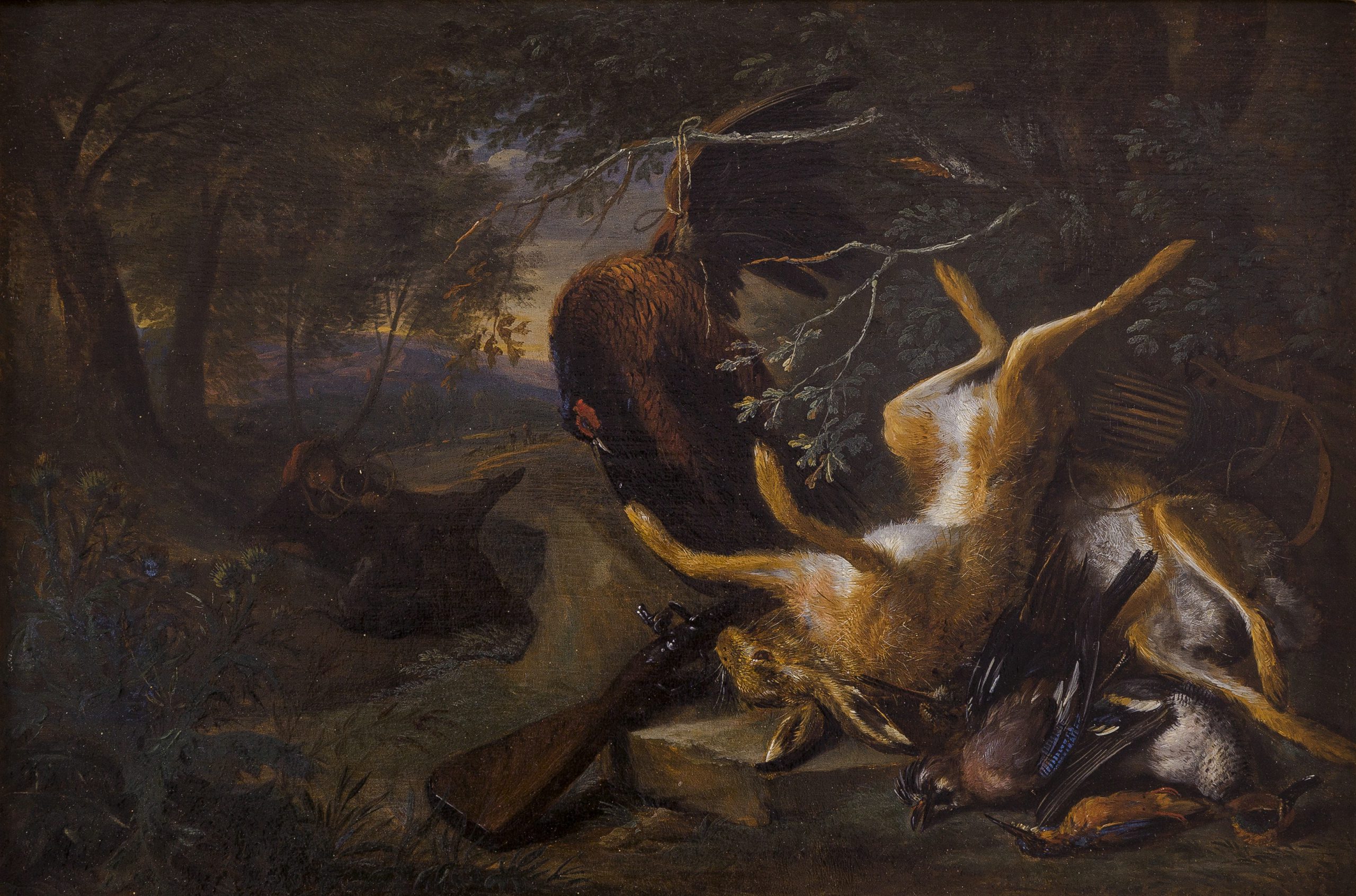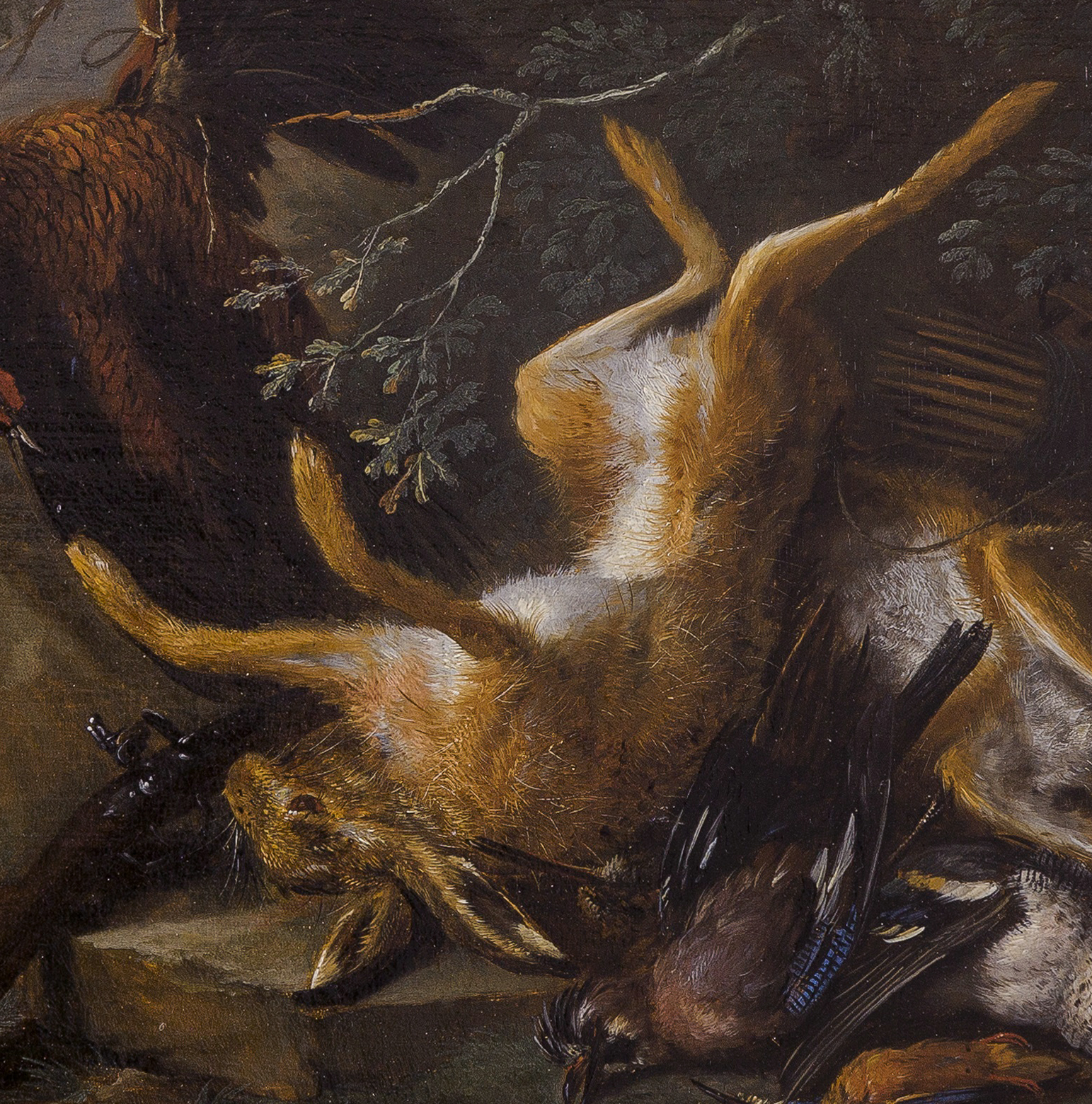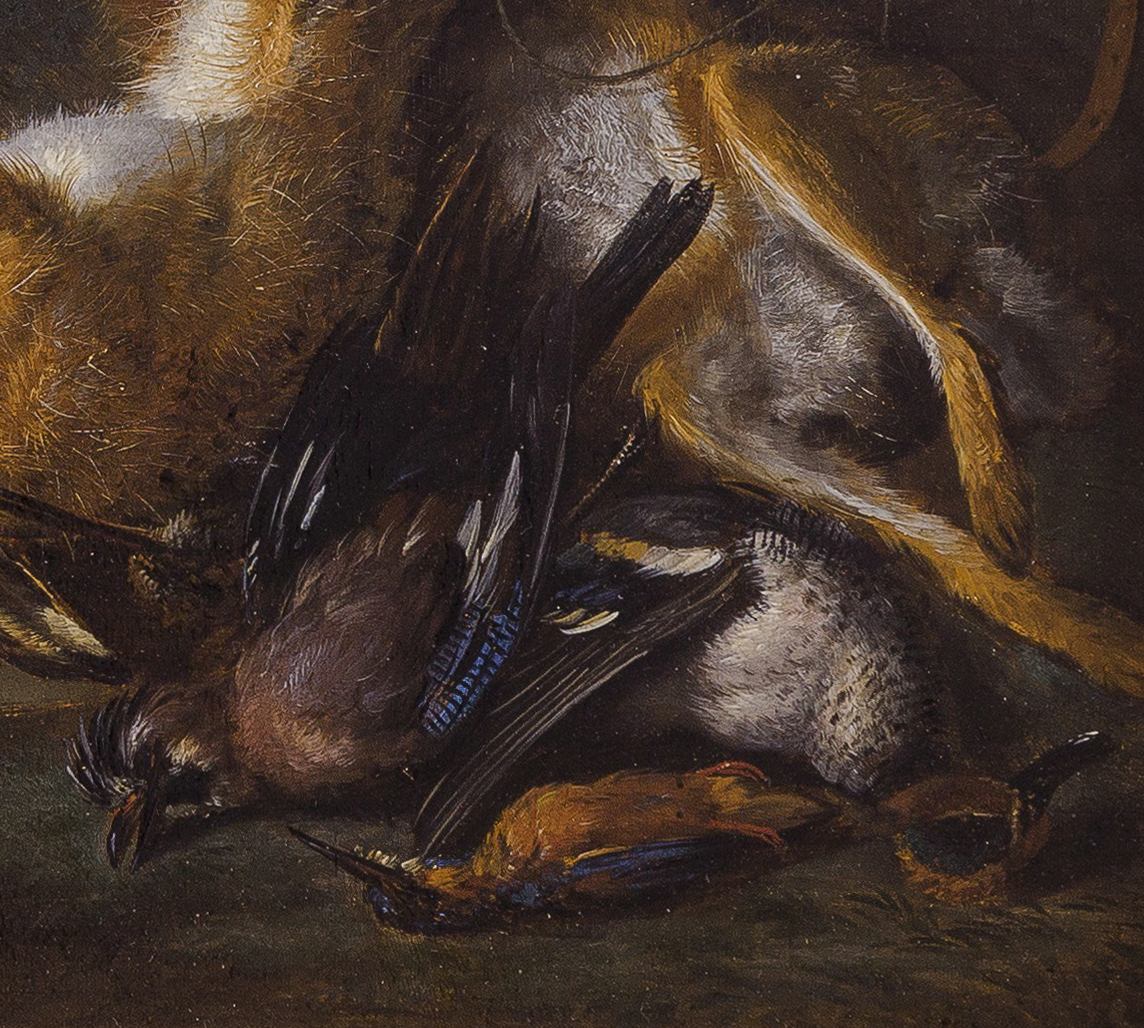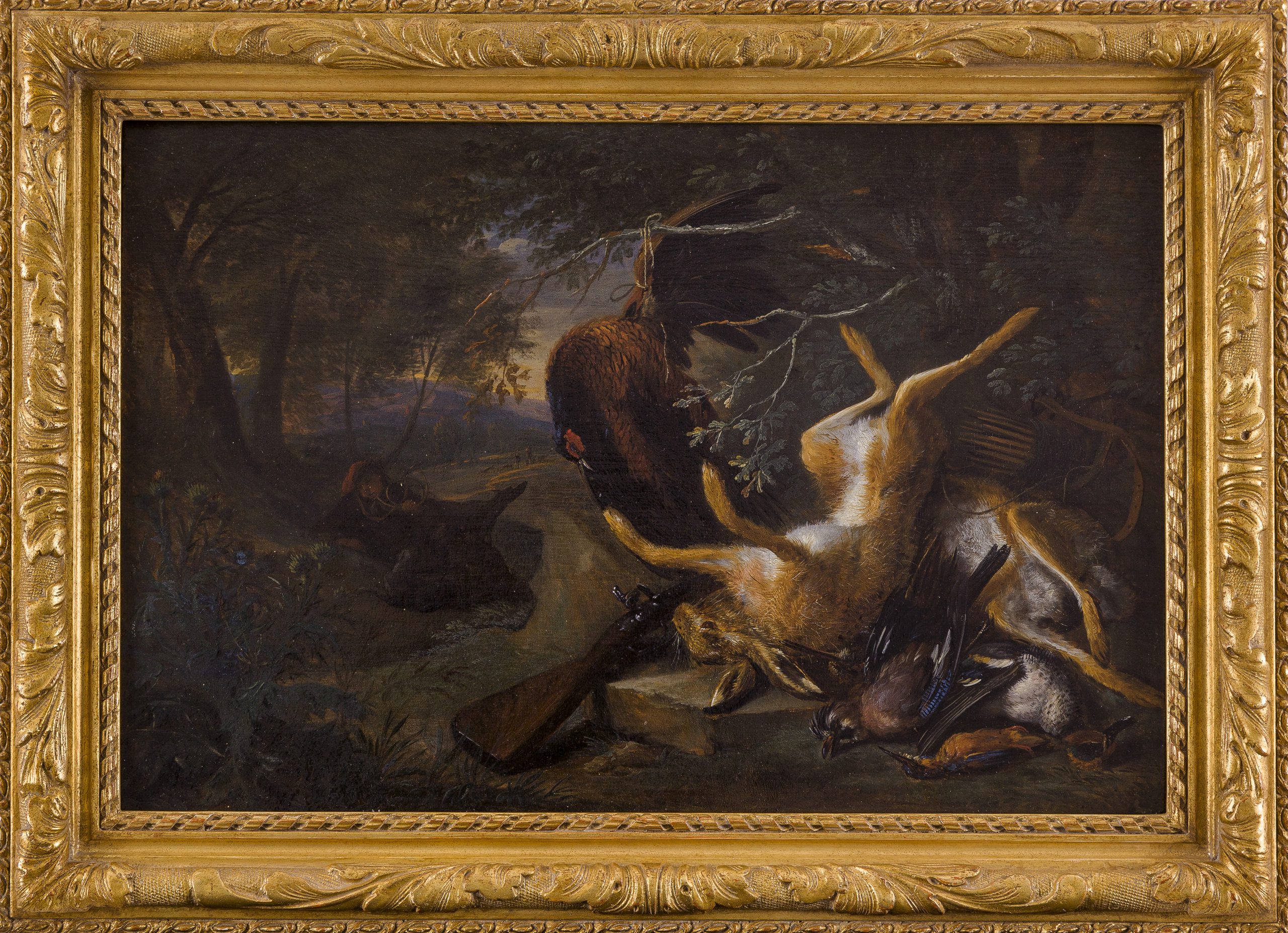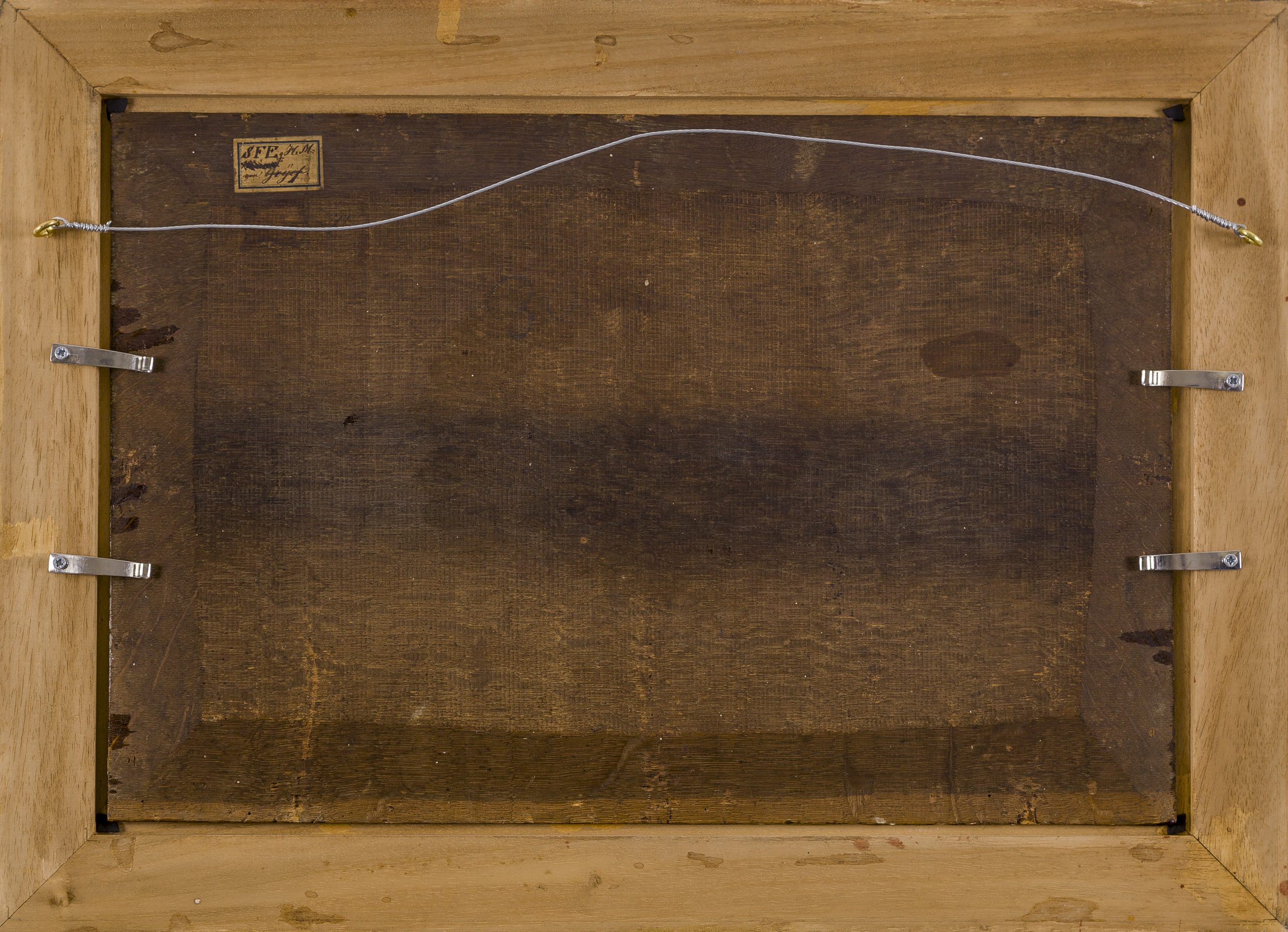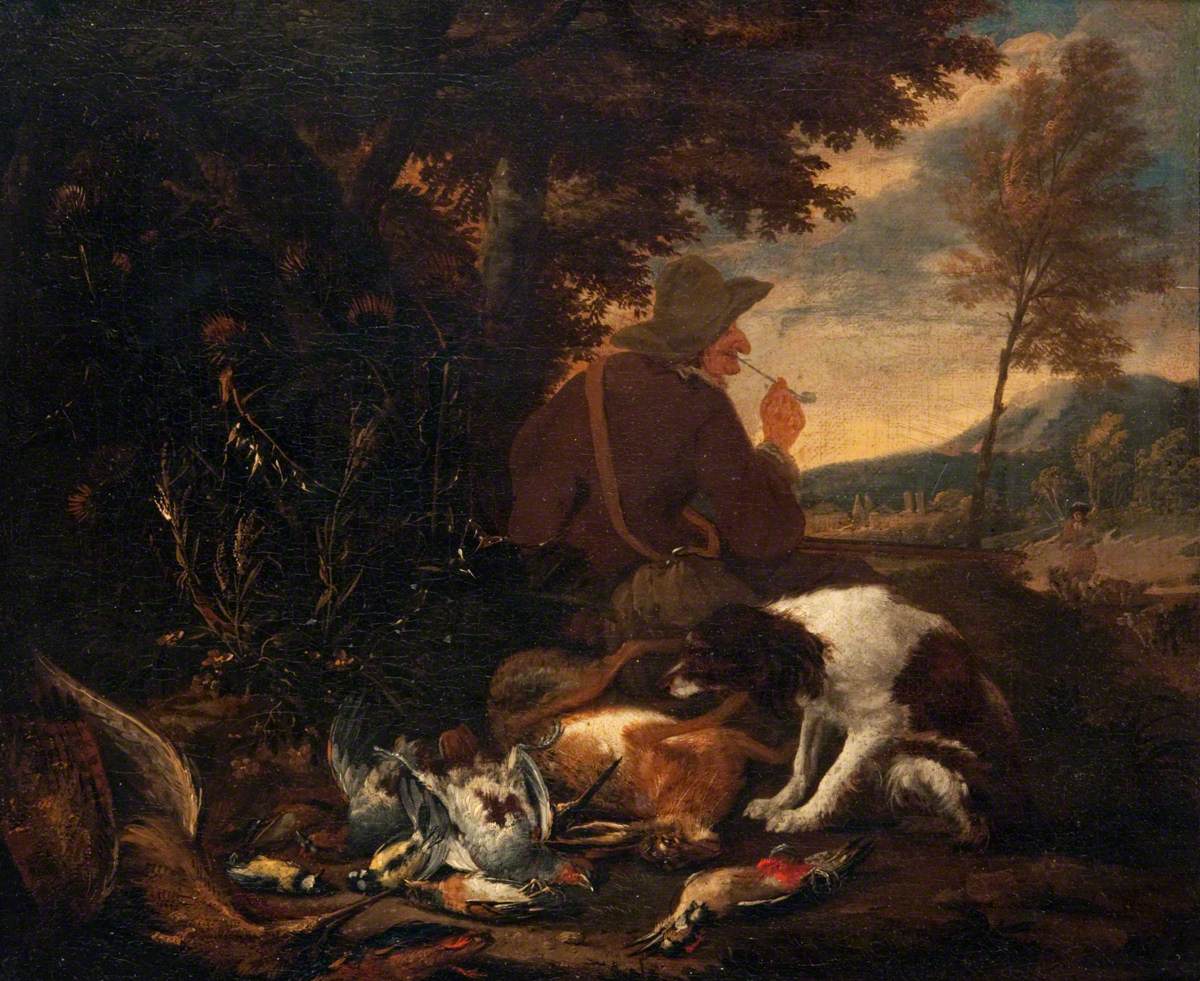ADRIAEN DE GRIJEF (Leiden 1657 – 1722 Brussels)
Adriaen de Grijef (Leiden 1657 – 1722 Brussels)
Hunting Still Life in a Landscape
Oil on panel, 34.6 x 51.9 cm (13.6 x 20.4 inch); presented in a carved and gilt reproduction frame after an example of the period
Signed ‘A Gryef f’ (lower left)
Provenance
Private collection, Switzerland
***
Adriaen de Grijef was baptised in Leiden on 6 December 1657, as the son of the painter Jacobus de Claeuw, also known as De Gryef (1623–1694) and Maria van Goyen, the daughter of the landscape painter Jan van Goyen (1596–1656).1 Adriaen was taught by his father, whose influence is clearly noticeable in his early works, which date from 1677. De Grijef was in Ghent in 1687, where he was admitted as master in the guild of St Luke, and was married in Antwerp in 1689 to Anna Francisca Marcus. He set up his studio in Antwerp, and in 1690 relocated to Brussels. In the last years of the seventeenth century he spent some years in the city of his birth, however in 1700 he moved back to Brussels, where he lived for the remainder of his life.
De Grijef was highly productive and specialised in animal and hunting scenes, often set in Mediterranean landscapes. These works were eagerly collected by aristocratic patrons, as only they were entitled to shoot and hunt – these ancients rights were frequently connected with land ownership. Royal and noble collectors were frequently passionate about such country ‘sports’, and liked to decorate their town and country houses with hunting scenes. In this work, De Grijef has realistically portrayed a dead hare, one of the hunter’s greatest trophies, and the speed and agility of this animal made it particularly difficult to capture. Even centuries after his death, the paintings of De Grijef were collected in this high circles. Even now they can be found in many distinguished collections, such as the Schloss Schleissheim (Bayerische Staatsgemäldesammlungen), the Kunstmuseum in Basel, the Musée des Beaux Arts in Marseille, and the Royal Museums in Brussels. Our painting can for instance be compared to De Grijef’s Hunting Scene in the Hunterian Art Gallery in Glasgow, Scotland (fig.).2 Other good examples in museum collections are the works by Grijef in The Fitzwilliam Museum, Cambridge and The Ashmolean Museum, Oxford.
This panel is a particularly good work by De Grijef and in wonderful state of preservation, with the artist’s sensitive brushwork in excellent condition. The hare is beautifully observed, as are the birds beside it, which can be identified as a woodcock, a Flemish Jay, a kingfisher and a teal, while a pheasant hangs behind it. The hunter himself occupies a subsidiary place in the background of the picture, and is seen blowing his horn, attracting the attention of his fellow hunters. The meticulous execution and fine brushwork illustrates De Grijef’s artistic training in Leiden, which was the centre of fine-painting in The Netherlands.
A painting by de Grijef's father, Jacques de Claeuw, is also offered by our Gallery and can be found here.
1. For the artist, see: B.J.A. Renckens, ‘Jacques de Claeuw en Adriaen de Gryeff, vader en zoon’, Kunsthistorische mededelingen van het RKD 4 (1949), p. 7-13.
2. Oil on canvas, 35 x 51 cm; RKD Images No. 20402.
